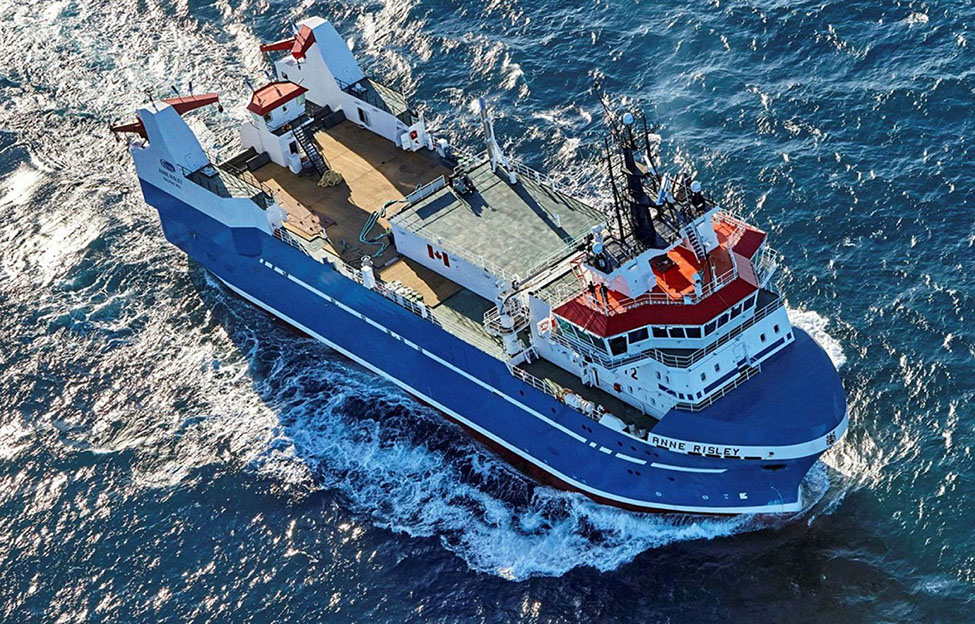Premium Brands Holdings Corporation reported record earnings and sales for Q1 2024, but its subsidiary Clearwater Seafoods continues to see losses.
Richmond, British Columbia, Canada-based Premium Brands reported its Q1 2024 revenue reached CAD 1.46 billion (USD 1.06 billion, EUR 988.9 million), an increase of 2.2 percent, or CAD 31.3 million (USD 22.8 million, EUR 21.2 million), over the same quarter of 2023. The record revenue helped the company achieve record adjusted earnings before interest, taxes, depreciation, and amortization (EBITDA) of CAD 121 million (USD 88.4 million, EUR 81.9 million), marking a 9.3 percent, or CAD 10.3 million (USD 7.5 million, EUR 6.9 million), increase over Q1 2023.
“Over the last three years, we have made significant capital investments in building the capacity needed to support our U.S. growth initiatives in protein, sandwiches, and artisan baked goods. With many of these projects now coming online, we are starting to see their potential as shown in our record sales and adjusted EBITDA for the quarter, despite facing a challenging macroeconomic backdrop in Canada,” Premium Brands President and CEO George Paleologou said in a release.
The company’s specialty foods segment made up the majority of Premium Brands’ revenue for Q1 2024, reaching CAD 987 million (USD 721.3 million, EUR 668.5 million) and comprising 67.4 percent of the revenue for the company. Specialty foods also saw increased gross profit, reaching CAD 223 million (USD 162 million, EUR 151 million), and gross profit as a percentage of its revenue increased by 160 basis points.
However, Premium Brands’ subsidiary Clearwater Seafoods, which it acquired in 2020, continued to suffer from excess snow crab inventory from the first quarter of 2023 onward. It was also hit by lobster supply shortages and challenging consumer environments in some markets, Premium Brands said.
As a result, the company’s revenue dropped to CAD 123.5 million (USD 90.2 million, EUR 83.6 million) in Q1 2024, down from CAD 124.5 million (USD 90.9 million, EUR 84.3 million) in the same period of 2023. The company’s losses expanded to CAD 25.9 million (USD 18.9 million, EUR 17.5 million) in the quarter, which was higher than the loss of CAD 24.1 million (USD 17.6 million, EUR 16.3 million) it posted in 2023. The company’s equity losses also increased from CAD 12 million (USD 8.7 million, EUR 8.1 million) in Q1 2023 to CAD 13 million (USD 9.5 million, EUR 8.8 million) in Q1 2024.
Premium Brands CFO Will Kalutycz said in recorded remarks that the growth of the company’s specialty foods group was offset by CAD 25.5 million (USD 18.6 million, EUR 17.2 million) in sales volume contraction that was “entirely due to lobster supply shortages.”
“We expect this situation to improve in the coming quarters and with the new fishing season. To this end, the first 2024 Canadian fishery, which opened last month, has started off well,” Kalutycz said.
Paleologou said that multiple capex projections – including a project to build a 60,000-square-foot value-added seafood facility in the U.S. state of Maine – are progressing.
“Several capital projects focused on supporting U.S. growth, including new plants and new capacity in key product categories, are either fully operational or ramping up and will be fully operational in the coming months,” he said.
The company, which has taken an acquisition-heavy strategy, did not make any acquisitions in Q1 2024.
“On the acquisitions front, we continue to enjoy a robust deal pipeline, and while we didn’t complete any transactions during the quarter, we are working on several exciting opportunities that we expect to close in the coming quarters,” Paleologou said.
In the company’s Q1 2024 presentation, it indicated it is in negotiations to acquire a seafood company that brings in CAD 300 million (USD 219 million, EUR 203 million) in sales each year and is in early-stage discussions with three other seafood companies that bring in a combined CAD 192 million (USD 140 million, EUR 130 million) in sales.
“We’re working on a number of exciting opportunities at a time when valuation expectations are moderating, with interest by food entrepreneurs to join our unique ecosystem at the best it has ever been,” Paleologou said.
Paleologou said the company typically sees larger sales in the latter half of the year and the company will continue to “build momentum” on its customer and product listing opportunities.
“The key driver of our performance was our U.S. growth initiatives, which generated organic volume growth of almost 10 percent, even though they are still in the early stages of development,” Paleologou said.








